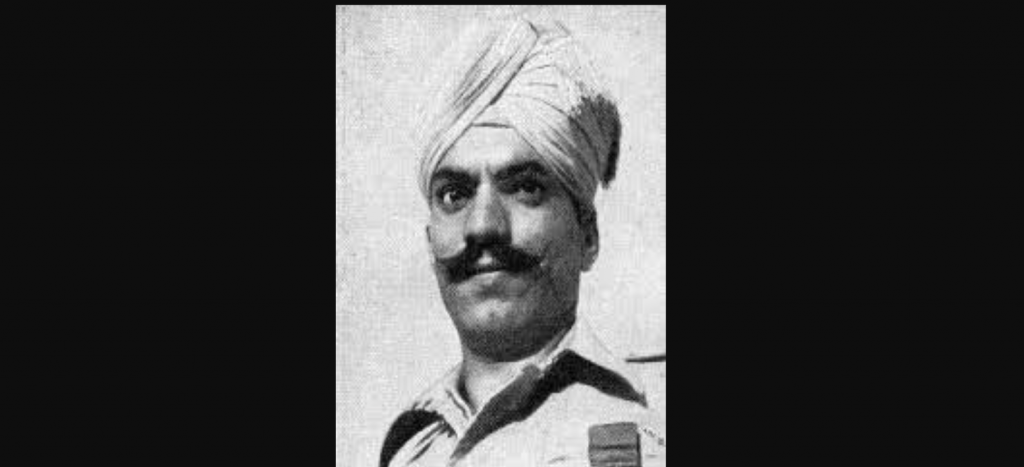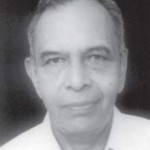Bhandari Ram was born on 24 July 1919 in village Auhar in Bilaspur State now Bilaspur District, Himachal Pradesh. At 22, he enlisted in the 16th Battalion of 10th Baluch Regiment. The regiment composed two-third Muslims from the North West Frontier Province and one-third Brahmin Dogras from the present day Himachal Pradesh State. After Independence, the Baluch Regiment was allotted to Pakistan and the Dogras were absorbed in the newly raised 8th Battalion of the Dogra Regiment.
On the appointment of Lord Mountbatten as Supreme Commander South East Asia Command, the Allies made considerable progress in Burma but a counter-offensive by the Japanese wiped out the gains and effectively confined the Indian Division to the Administrative box.
Operations in the Arakan are difficult and call for strength and perseverance. General Slim decided to use the 25 Indian Division to clear the route into North Western Arakan through the Mayu Hills. The 16 Baluch under command of 51 Indian Brigade was part of this division. Series of short attacks had to be carried out to soften the Japanese defenses before a major offensive could be launched. In one such preliminary operation, 16 Baluch was tasked to attack a bunker, held by the Japanese. 16 Baluch launched the attack on 22 November 1944. Bhandari Ram was in the leading section of the attacking Platoon from 16 Baluch. To reach the objective it was necessary to climb a steep slope via a narrow sheer-sided ridge. Just fifty yards from the crest, the leading section came under enemy fire that wounded three. Bhandari Ram was hit in the leg and shoulder. Intense light machinegun fire from the Japanese positions then held down the platoon, delaying the company attack. A seriously wounded Bhandari Ram crawled forward close to the enemy machinegun post but before he could attack it with grenades the Japanese hurled grenades at him. He got wounded in the face and chest. In extreme pain and spattered with blood, Sepoy Bhandari Ram continued to crawl and reaching closer lobbed a grenade into the enemy post killing the machine-gunner and two others with him.
His bravery inspired the platoon to rush forward and capture the complete position. Upon his comrades return, Bhandari Ram asked if the enemy position was taken. When told it was, he replied: “I can die now, my duty is done”. He, however, survived and was carried for dressing wounds. He set an extraordinary example of gallantry, determined to destroy the enemy at all costs without thinking of his own life. One is left awestruck reading the details about Sepoy Bhandari Ram’s bravery. Little wonder, his comrades were inspired.
His courage, determination and devotion to duty earned him the Victoria Cross (VC) by The Viceroy Lord Wavell at the Red Fort, New Delhi on 3rd March 1945. After the war, Bhandari Ram VC stood alongside Field-Marshal Lord Gort VC and other VC holders to be honoured by King George V1. After Independence, the Baluch Regiment was allotted to Pakistan and the Dogras were absorbed in the newly raised 8 Dogra Battalion. He displayed his tenacity three years later during the Indo-Pak War 1947-48 where he fought against his former Baluch colleagues and did not allow them to annex Indian territory.
Bhandari Ram served for 22 more years until his retirement in November 1969 as the Captain. He was awarded the Param Vishisht Seva (Most Distinguished Service Medal). Post-retirement, he took up farming in his home district until indifferent health prevented him from working. Until a year before his passing, Bhandari Ram had been regularly attending the annual Reunions of the Victoria Cross Association at London. He died peacefully at his home on 19 May 2002 at 82. The Baluch Regiment created a montage of his VC-winning action and of his Army life which was presented to The Army and Navy Club UK to perpetuate his memory.


 [/column]
[/column]